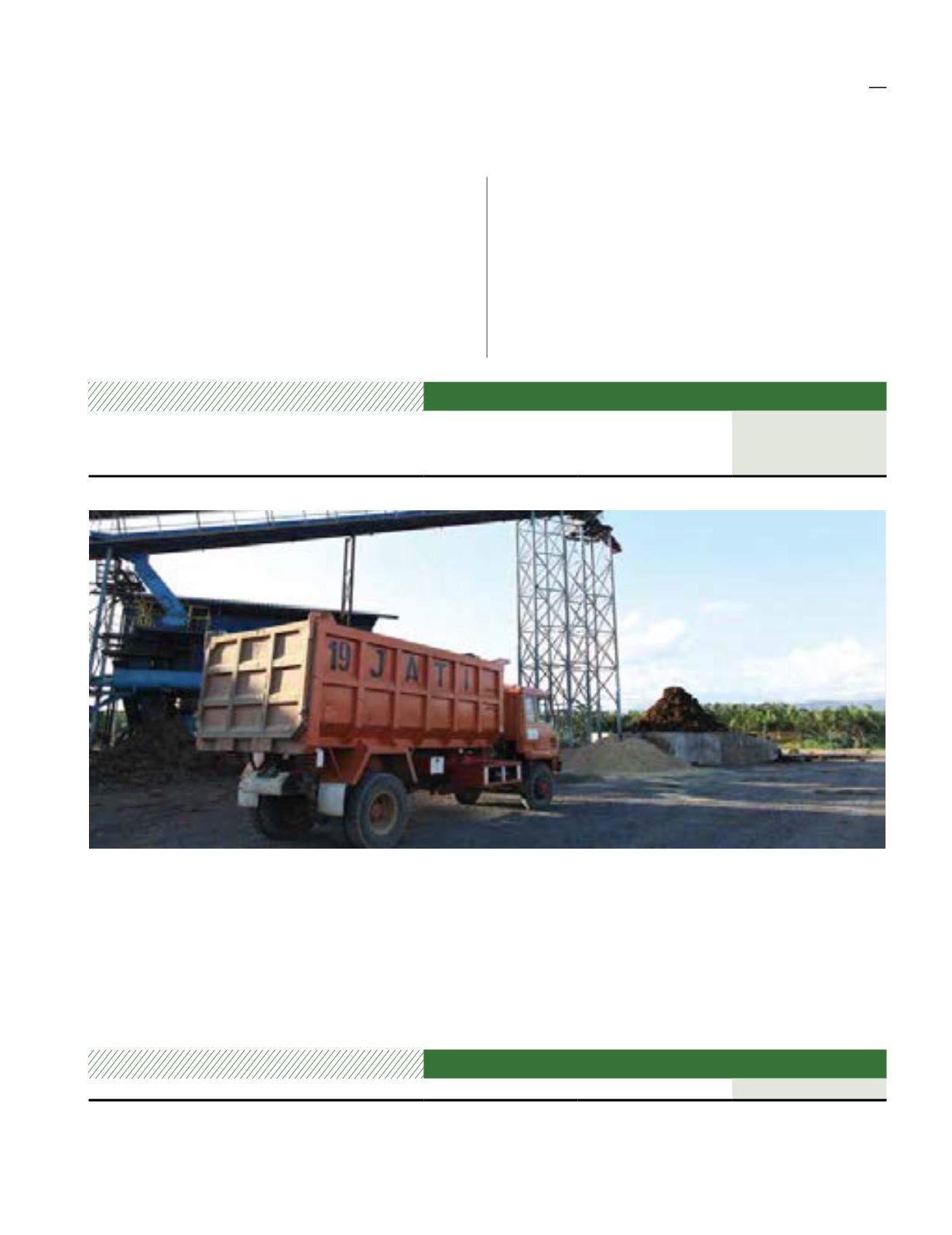

However, our average BOD reading for POME during
the land application stage falls well within the allowable
discharge limits of < 5,000 parts per million (“ppm”).
The POME collected from the mill is treated in
open ponds located on site. The organic material in
wastewater is broken down by natural occurrences of
anaerobic and aerobic bacteria. This process eliminates
the need to add chemicals before the water is
discharged and results in successful fish breeding at the
PTNJL has achieved the Green rating, the second highest level in Indonesia’s Program for Pollution Control,
Evaluation, and Rating (“PROPER”) in the manufacturing/agroindustry category for 5 consecutive years. The Green
rating is awarded to businesses/activities that have displayed environmental management effort and achieved
results better than those required by regulation.
A substantial amount of unused fish parts generated by fish processing activities at IFC Ltd, the
Food Division’s
processing plant in Papua New Guinea, are converted into fishmeal which is then sold to companies involved in the
aquaculture and livestock industries. The remainder is sold to external fishmeal processors.
FYE2017 (MT)
FYE2018 (MT)
FYE2019 (MT)
Fishmeal
315
611
733
Hazardous waste and residual products recovered from our operations are transported and disposed of in
accordance with stringent industry standards and statutory requirements.
final effluent pond. POME is utilized in two ways. It is
either mixed with shredded EFB to make our compost
or applied directly to the estate via a furrow system.
In addition to being converted into compost, shredded
EFB is also widely used as feedstock for the steam
boiler at the mill for power generation. Further, we
regularly monitor the POME used for land application
to ensure that it does not overflow into the natural
waterways.
FYE2017 (MT)
FYE2018 (MT)
FYE2019 (MT)
Total EFB produced
40,332
51,684
47,233
EFB processed into compost
22,660
26,395
27,155
POME applied to estate
71,014
91,209
116,320
environment
39










